AL Central: Potential breakout prospects for 2019

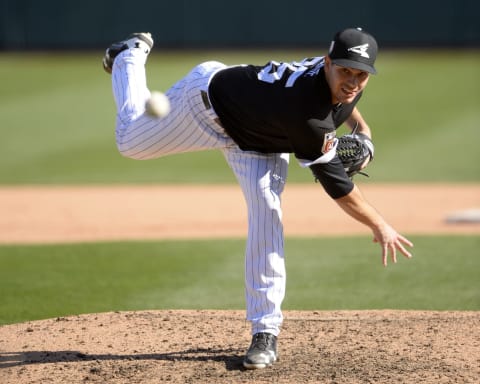
Let us continue to take a look at the potential breakout prospects in the game. This time, we head to the AL Central.
In this installment of 2019 breakout prospects to watch, we’ll take a look at the AL Central. This is one of the weaker divisions all around when it comes to farm systems.
While the White Sox have six top one hundred prospects, it’s pretty bleak for every other team. The Detroit Tigers and Minnesota Twins each have three, the Cleveland Indians have two and the Kansas City Royals have just one.
The White Sox are in the position they’re in because of the rebuild that they began in 2017, when they traded away Chris Sale. They received Yoan Moncada, who was the number one prospect in baseball, Michael Kopech, the current number three right-handed pitching prospect, as well as Luis Alexander Basabe, the number nine prospect in the 2018 White Sox system, per MLB Pipeline.
Later in the Jose Quintana trade, they recieved Eloy Jiminez, baseball’s number three overall prospect, and Dylan Cease, the number 21 ranked prospect. When they sent Adam Eaton to Washington, they got Lucas Giolito, the top pitching prospect at the time, Reynaldo Lopez and Dane Dunning.
As for the other teams, the Royals haven’t had a great farm system since before their World Series runs, with a young Eric Hosmer and Mike Moustakas.
The Twins and Tigers are working on rebuilding their systems. The Tigers haven’t had a good system for a while now, but hope to change that starting with the number one overall pick Casey Mize. The Twins are off to a great start in their rebuilding process. Royce Lewis and Alex Kirilloff are both in MLB Pipeline’s top ten, ranked five and nine, respectively.
After trading shipping Francisco Mejia off to San Diego for Brad Hand at the deadline, and trading Clint Frazier and Justus Sheffield for Andrew Miller in 2016, both of whom would be contributors at this point, Cleveland’s farm system has taken a hit. Now, only Triston McKenzie and 2016 second round pick Nolan Jones remain in the top 100.
Round two, here we go.
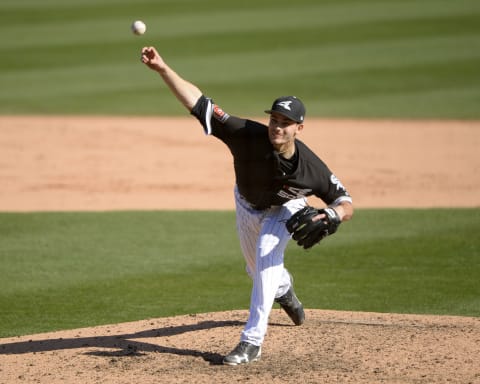
Dylan Cease, RHP, Chicago White Sox
This was by far the toughest choice. The White Sox system is so deep, and it was hard to find someone to “breakout.”
Cease, technically, has broken out. In the minors in 2018, Cease pitched in High-A and Double-A. His ERA was fantastic, sitting at 2.40, and he struck out 160 batters in 124 innings, a 11.6 K/9. He has cut his walks pretty significantly, dropping his BB/9 from 5.0 just two years ago, to 3.6 in 2018.
The right-hander had his huge rise over 2018. He ended the season at 58 on MLB Pipeline’s 2017 list, and moved up to 25 in 2018.
So, yes, he broke out in the minors, but in his case, I’m talking a Major League breakout. It will be tough with Vladimir Guerrero, Jr. and Eloy Jimenez, in the same league, but if Cease is up for a good chunk of the season, he has a real shot at AL Rookie of the Year.
The White Sox top pitching prospect, Michael Kopech, will be out this season because of Tommy John surgery, so all eyes will be on Cease in that department.
With his upper-90s fastball and great curveball, he will be a guy to watch for all season.
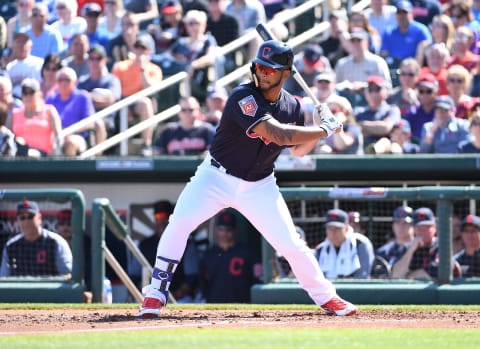
Bobby Bradley, 1B, Cleveland Indians
This was another tough one. It was hard to find someone in a position that wasn’t loaded.
Bradley has the best power in Cleveland’s system, which MLB Pipeline gives a 60 on the 20-80 scale. In 483 at-bats, the lefty smacked 27 home runs, drove in 83, and collected 26 double and five triples.
That’s all that he is really going to give you, though. He is average defensively, and his .224/.308/.466 slash line leaves a lot to be desired. In his 483 at-bats, he struck out 148 times, a 33.6 percent clip, and walked just 56 times, a 8.6 percent rate, so he doesn’t offer much in the walk department, either.
However, there is a chance he can still contribute to the big league roster in 2019. Cleveland acquired Jake Bauers from Tampa Bay in December, but his 95 wRC+ in 2018 was not inspiring. Carlos Santana is still there as well, and he is still a good power and on-base guy.
Bradley can wiggle his way into the rotation with those two, especially if Cleveland ends up not loving Bauers. Bradley is the better power option of the two, as well.

Christin Stewart, OF, Detroit Tigers
There seems to be a pattern here in the AL Central. It’s hard to pick a prospect, mostly because none of them have good systems.
Stewart is different from everyone in this series so far, because he actually has some major league experience. It wasn’t much, just 60 at-bats, and he hit .267/.375/.417 with two homers for the big league squad.
He is still considered a prospect, though, hence his inclusion on this list.
The lefty with plus power, 55 according to MLB Pipeline, hit 25 home runs with 21 doubles and 80 driven in during 2018. Not only that, but he improved on his walks and strikeouts from 2017 to 2018. His strikeouts were cut from 138 in 2017 to 108 in 2018, and he boosted his walks from 56 to 68 over the two seasons.
As of now, the Tigers official website has Stewart listed as the starting left fielder. He has his chance to make an immediate impact for Detroit, especially if he is playing everyday from the start of the season. He, unlike everyone so far, can breakout on the biggest stage.
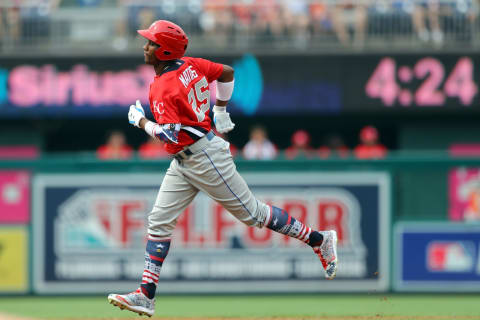
Seuly Matias, OF, Kansas City Royals
Matias signed with Kansas City as a 17-year-old out of the Dominican Republic. 2018 was his first year in full season ball, at just the age of 19.
Matias had a great year power wise at Single-A ball in Lexington. In his 338 at-bats, the righty smashed 31 homers, 13 doubles, drove in 63 runs and slugged .550.
Like most young hitters, he struggled with his strikeouts. With 131 strikeouts to just 24 walks in those 338 at-bats, he’s going to need to improve on that immensely. Yes, his power is a plus, but his .231 average and .303 on base aren’t what you want.
MLB Pipeline has Matias’ arm rated as a 70, which is an absolute cannon.
“With his combination of tools and physical presence, he draws comparisons to Yoenis Cespedes and Andre Dawson,” per his MLB Pipeline write up.
It’s going to be a few years until we actually see Matias in Kansas City because he is so young and only has one year of full season ball under his belt.
The the youngster keeps on his current trajectory power wise, and cleans up the strikeouts, there will be plenty of room for him in Kansas City with the teams current roster. MLB Pipeline has Matias’ ETA at 2021, so he has plenty of time to work on his approach.
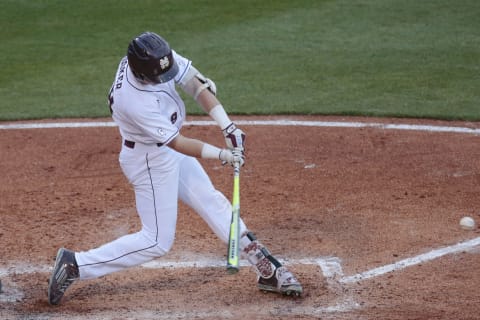
Brent Rooker, 1B/OF, Minnesota Twins
Rooker is another guy who can make a pretty immediate impact at the Major League level. He ended the season at Double-A in 2018.
More from Call to the Pen
- Philadelphia Phillies, ready for a stretch run, bomb St. Louis Cardinals
- Philadelphia Phillies: The 4 players on the franchise’s Mount Rushmore
- Boston Red Sox fans should be upset over Mookie Betts’ comment
- Analyzing the Boston Red Sox trade for Dave Henderson and Spike Owen
- 2023 MLB postseason likely to have a strange look without Yankees, Red Sox, Cardinals
In his 503 at-bats for Pensacola, the righty slugged 22 homers, 32 doubles and drove in 79 runs with a .465 slugging percentage. His bat has allowed him to move pretty quickly through the system, even though he was just drafted in 2017.
The Twins are moving him around between the outfield and first base, but there isn’t really a spot for him in the outfield quite yet. Eddie Rosario has been very good for the past two seasons, so Rooker will have to battle it out with Max Kepler for the right field position.
If the Twins don’t end up liking Rooker in the outfield, they can always slide him in at first base if they want to pit him against newly acquired C.J. Cron, who had a good 2018.
Next. Top 150 MLB prospects. dark
For now, if the Twins want to keep speeding the 24-year-old through the system, his best shot would be to supplant Kepler in right. This will be interesting to keep your eye on, especially with Rooker being the first of Minnesota’s power hitting outfield prospects. We will just have to keep waiting for Alex Kirilloff and Trevor Larnach.